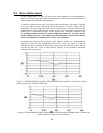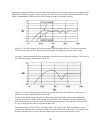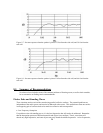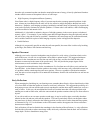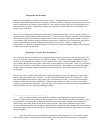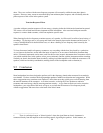
29
9. Accuracy of Bass Reproduction
Introduction
We have all had the experience of listening to speakers with poor bass quality. Perhaps the bass was muddy,
or ill-defined. Possibly the bass was exaggerated or bloated. These distortions are distracting and keep us
from enjoying the full measure of the performer’s intent.
Concerning the reproduction of low frequencies, Avalon Acoustics pursues a different design goal than most
other speaker manufacturers. Specifically, we believe that the complete absence of stored resonant energy is
of paramount sonic importance. First, we will discuss some of the technical aspects of bass reproduction and
perception, and then explain how this relates to the listening experience.
9.1 Sensitivity to Time-Related Information
The human ear/brain system is extremely sensitive to time-related distortions. This is because directional
(and spatial) information is provided by inter-aural time (and phase) differences. During the period of man’s
evolution, the ability to accurately determine the direction and distance of sound sources conferred a survival
advantage, hence our present day aural acuity.
This sensitivity to time-related information is apparent in the terms used to describe the quality of a system’s
bass reproduction. Many of the terms refer to temporal properties. A system with poor low-frequency
transient response is described as “boomy”, heavy “sluggish”, or “slow”. When the transient response is
accurate, the bass is characterized as “tight”, “clean”, “quick”, or “fast”.
“Fast Bass”
The term “fast bass” would seem to be an oxymoron. After all, it is the “slowness” of a note that makes it a
low frequency. Nonetheless, the term provides an accurate description of our subjective impression. Many
people have erroneously ascribed “fast bass” to the use of a light diaphragm or the use of a powerful
energizing system. (See note 1) In fact, it is not how fast the diaphragm can be set into motion that imparts a
speaker with “fast” bass. Rather, it is how fast that motion can be stopped, how quickly the stored energy
can be dissipated, that results in the sensation of “fast” bass.
________________________________
(1) The acceleration of an object is equal to the force exerted upon it, divided by the mass of the object.
Since a loudspeaker is used above its fundamental resonance, it operates in what is known as the mass-
controlled region. In this region, high acceleration (large driving force and/or small driven mass) does not
imply extended high frequency response or fast transient response. Instead, high acceleration confers high
efficiency.






